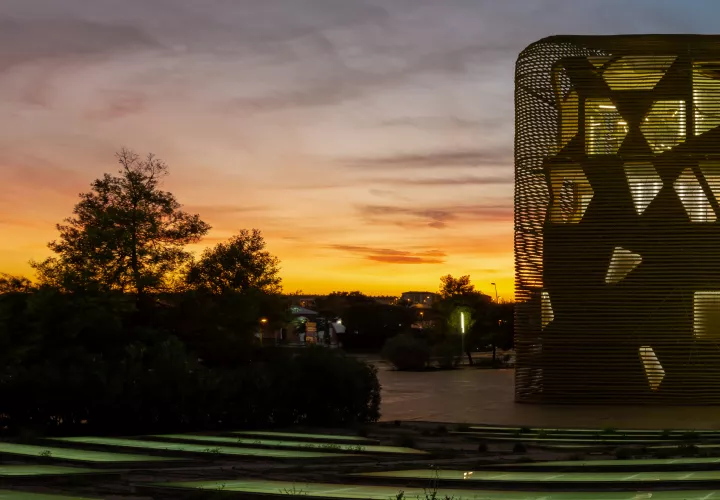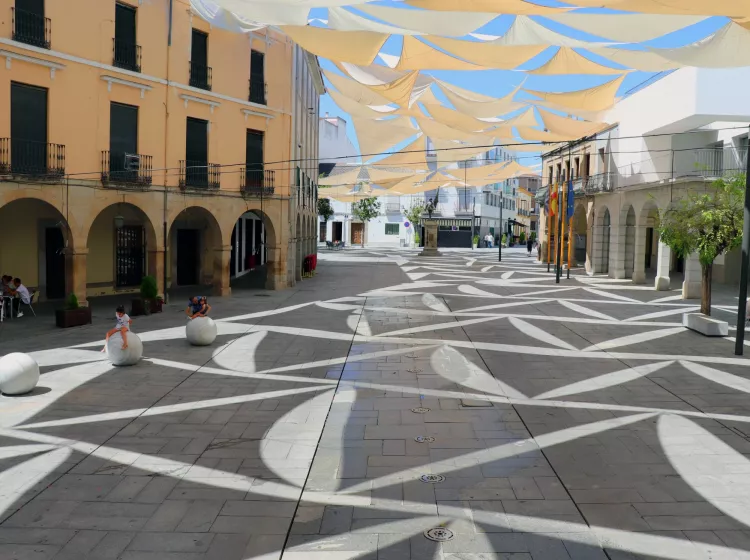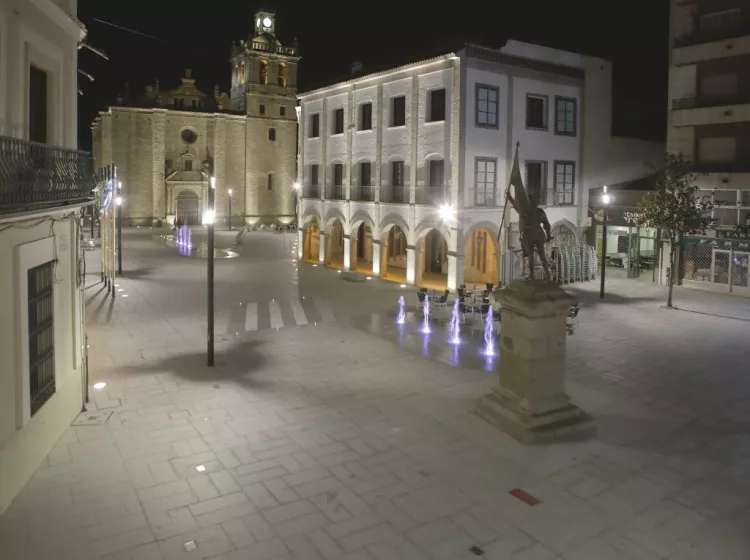
Located in the northeast of the province of Badajoz, Villanueva is a clear example of the balance between the urban and rural spheres, as is demonstrated by the large number of industries located in its surroundings.
Villanueva de la Serena, as a city of services, radiates its commerce, businesses, shopping centres, franchises and, in general, its economic activity over an extensive area of influence.
In this way, the Conference Centre is located in a place of easy access for the three regions historically related to the city, offering magnificent and modern facilities for the almost 150,000 inhabitants of the area.

A strategic point
Villanueva de la Serena is located in a privileged spot, in a land steeped in history, where two regions overlap. Although its heraldic coat of arms shows Puerta soy de La Serena, it is also the gateway to Vegas Altas del Guadiana. As the head of the judicial district, it is also geographically linked to another of the most beautiful regions in terms of nature and water: La Siberia.
Its more than 26,000 inhabitants live in one of the centres with the greatest economic potential in the region. A city of services and traditionally linked to livestock farming, it was one of the seats of the Mesta. The fertility of the surrounding land, irrigated by the Guadiana and Zújar rivers, produces notable crops of maize, rice, tomatoes and vegetables in general.
It is fruit and vegetable products that have been the driving force behind an important agri-food industry in the area around Villanueva de la Serena and its district, especially stone fruit, which is highly exported.

A city in constant evolution
The fertility of its lands made possible the presence of the first settlers since ancient times; Celtic traces and Roman vestiges at the confluence of the Zújar and Guadiana rivers bear witness to this.
Villanueva was also a significant settlement of the Order of Alcántara, temporary residence of the patron and humanist Juan de Zúñiga and his court of scholars (among them Antonio de Nebrija) or the homeland of those who opened new pages in the history of the New World, such as Pedro de Valdivia.
Centuries later, the city maintains its restless and pioneering spirit and thus has, among other realities, that of being a Smart City, the first in the country to make this innovative project available to citizens: the use of technologies to achieve greater social welfare, the provision of public services and to promote business development. As a Child Friendly City, recognised by UNICEF, it is firmly committed to children's rights in order to create better living spaces and more habitable environments for young people.
